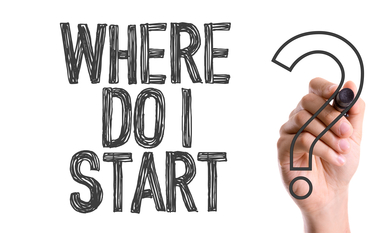How Can I Design My Curriculum to Promote Intercultural Learning?
Here you can find information and practical support on Internationalisation at Home (IaH), Internationalisation of the Curriculum (IoC) as well as Intercultural Learning showcases from UCD colleagues
- What is Internationalisation at Home (IaH)?
- Internationalising the Curriculum (IoC): A Practical Guide
- Intercultural Learning: UCD Showcases
What is Internationalisation at Home?
Internationalisation at Home (IaH) is about extending the benefits of an international university education to all students. Internationalisation at Home (IaH) is not limited to elective modules; it is embedded across the entire formal core curriculum, as well as the informal curriculum, to ensure that it reaches everyone.
“Internationalization at Home is the purposeful integration of international and intercultural dimensions into the formal and informal curriculum for all students within domestic learning environments.”
(Beelen & Jones 2015, p. 69)

Key Points
- An internationalised core curriculum reflects international and intercultural dimensions in module and programme learning outcomes, content, pedagogy and assessment.
- The term ‘Internationalisation at Home’ was first introduced twenty years ago (Crowther et al., 2001) and has been seen as a response to the prevailing tendency to think of internationalisation exclusively in terms of student mobility (Beelen & Jones, 2015).
| Action
For Module and Programme Coordinators The following ATIAH Self-Audit Tool and Curriculum Framework can be used to support faculty to review current practice and implement internationalising initiatives in the curriculum. |
Internationalisation at Home Self-Audit Tool
Find out to what extent Internationalisation at Home (IaH) practices are currently enacted in your School or programme using the Internationalisation at Home Self-Audit Tool.
This self-evaluation instrument has been created for universities seeking to benchmark their Internationalisation at Home practices, review their current practice and identify areas for improvement.
ATIAH (2018). Self-audit Tool: Self-evaluating Internationalisation at Home. Retrieved from https://research.ncl.ac.uk/atiah/outputs/. The Self-Audit Tool has been developed as part of the project Approaches and Tools for IaH (ATIAH), an ERASMUS+ funded Key Action 2 project (2016-2018).
Curriculum Framework for ‘Internationalising Your University Experience’
Review and improve Internationalisation at Home (IaH) practices across your modules and programmes using the ATIAH Curriculum Framework for ‘Internationalising Your University Experience’
- Stimulate reflection and discussion on the possibilities of developing an internationalised curriculum among your programme team.
- Support the development of a module or programme to enhance intercultural skills and global knowledge among students.
- Evaluate and enhance the broader curriculum to embed intercultural learning into curriculum design. It also provides a framework to benchmark and evidence performance.
ATIAH (2018). Curriculum Framework for ‘Internationalisation your university experience. Retrieved from https://research.ncl.ac.uk/atiah/outputs/. Developed as part of the project Approaches and Tools for IaH (ATIAH), an ERASMUS+ funded Key Action 2 project (2016-2018).
Internationalising the Curriculum (IoC): A Practical Guide
“An internationalized curriculum will engage students with internationally informed research and cultural and linguistic diversity and purposefully develop their international and intercultural perspectives as global professionals and citizens.”
(Leask 2015, p. 10)
The process of internationalising the curriculum involves a systematic approach, ideally with entire faculty teams, to ensure that international and intercultural learning is effectively and appropriately integrated across all modules in a programme of study.
Students engage with modules and programmes through a global lens, gaining a critical appreciation of the cultural and regional factors that have shaped differences in disciplinary knowledge, approaches and professional practice across the world.
An Internationalised Curriculum
- Clearly links internationalised module and programme learning outcomes to content, teaching, learning and assessment activities.
- Enables students to explore subject-area knowledge from different cultural, national and geographical perspectives.
- Recognises that student learning takes place in cultural contexts, shaping disciplinary knowledge and the learning process in significant ways.
Key Components of an Internationalised Curriculum
1. Learning Outcomes

This is a first step in curriculum design.
Learning outcomes state the knowledge, skills and/or attitudes that students will develop as a result of successfully completing a module or programme of study.
Internationalised Learning Outcomes
- Formally embed international and intercultural learning into modules and programmes.
- Used in an outcomes-based curriculum and directly linked to module and programme content, teaching, learning and assessment strategies. See our resource on Biggs’ model of constructive alignment in curriculum design for further information.
Learn more about writing learning outcomes. In addition, Guide to Taxonomies of Learning may be a helpful resource to support the description of different types of learning in an outcomes-based approach to curriculum design.
Internationalising your Learning Outcomes
Internationalised learning outcomes will look different across disciplines and subject-areas. In some cases, the focus might be placed on exploring sociocultural perspectives or understandings. In others, there will be a greater emphasis on critically engaging with international comparisons in policy and practice while others may seek to include more diverse geographical, physical and/or environmental knowledge into the curriculum.
Betty Leask’s Internationalising the Curriculum (2015) provides practical guidance and examples for those seeking to internationalise their learning outcomes.
In an internationalised curriculum, you will:
- Include content, perspectives, learning materials (readings, data, models, examples, etc.) from around the world.
- Design teaching, learning and assessment activities that harness existing cultural diversity in the classroom to expand students’ knowledge and support the development of intercultural competence.
Key Point
Internationalising the curriculum differs across academic disciplines. Faculty are at the centre of decisions about how to integrate international and intercultural learning into the curriculum.
Learn More
The Internationalisation of Higher Education (Clarke, Yang & Harmon, 2018) explores the extent to which Irish tertiary education institutions have become internationalised and the range of strategies and approaches developed to attract and retain international students. The study focused on institutional strategies, curriculum, teaching and learning and the provision of supports for international students at institutional level. Combining survey data with interviews conducted with directors of international offices, faculty and students, both international and Irish, this is the first study of its kind to explore internationalisation in Irish higher education from a range of different perspectives.
Challenges and Conflicts in the Internationalisation of Planning Education (Williams, 2022) explores the changes in planning education at UCD (2011-2021) and the role of internationalisation in driving curriculum change and enhancing the educational experience for both local and incoming students. Included is literature on internationalisation in education and planning programmes, analysis of the data on student admission in planning programmes at UCD and academic staff experiences of such changes.

Activity
As a programme team or individually, write down your responses to the following questions:
1. Identify the knowledge, skills and values that are important for your students to develop as graduates of your programme in a globalised world.
2. In which modules do you see opportunities for students to develop international and/or intercultural knowledge, skills and values?
3. Select a module that you would like to internationalise. Write a new learning outcome or modify an existing LO to embed an international or intercultural dimension into this module.
Strategies to Internationalise Learning Activities
- Set students challenges that involve real-life global issues that require transnational solutions (in multicultural groups, if possible).
- Use comparative approaches e.g. enable students to examine Irish and international contexts, policies, practices, and environments. This approach should be truly global, not limited to European or Anglophone countries.
- Invite international experts to deliver guest lectures via Zoom, providing different global perspectives on module topics.
- Develop learning partnerships with colleagues from other universities around the world to create ‘virtual mobility’ opportunities for students.
- Enable students to work together in groups to explore module content from different cultural and regional perspectives. Students may share their findings through in-class discussions or presentations or online.
- Invite students to recognise and discuss biases in textbooks and learning materials.
- Create opportunities for students to consider how culture shapes disciplinary knowledge and/or professional practice.
2. Internationalising Learning Activities

Whether in online or face-to-face environments, the design of activities to support international and intercultural learning should be clearly aligned with the learning outcomes and assessment strategy on a module and/or programme of study.
Learning activities should engage students with a wide range of cultural and regional knowledge and perspectives. The presence of culturally and linguistically diverse students does not, in itself, internationalise the curriculum (Leask 2015). Faculty must purposefully design and implement activities that will support international and intercultural learning.
In addition to making decisions about module content and the knowledge, skills and competencies that you want your students to develop, a central feature of any internationalising initiative is the fostering of an inclusive and culturally responsive learning environment.
Making Opportunities for Intercultural Dialogue
Learning environments that respect and value cultural diversity open up opportunities for students to share their backgrounds, identities and experiences, and to actively learn from each other. This supports the development of cultural self-awareness and helps students to explore subject knowledge from a range of different cultural perspectives.
The Higher Education Academy’s Internationalising the Curriculum Toolkit offers guidance and practical tools to help you embed intercultural dialogue into the learning environment.
Problem-Based Learning (PBL)
Problem-based learning (PBL) represents a “shift from teaching to learning, and consequently the task of the teacher is altered from the transferring of knowledge into facilitation to learn” (Kolmos 2002).
With PBL approaches, group work can support student learning as they collaborate with their peers to solve problems.
This student-centred pedagogy can be used to develop subject knowledge, as well as problem-solving skills and intercultural communication. In the context of international and intercultural learning, PBL can be used to set students a ‘real world’ global challenge that requires transnational knowledge, collaboration and communication skills.
Terry Barrett's 'A Practitioner’s Guide to Enquiry and Problem-based Learning: Case Studies from University College Dublin' offers practical guidance on using PBL in your teaching practice.
Practical Tips:
-
While students might initially find it easier to work with those from similar cultural backgrounds, one approach is to deliberately assign students to work in culturally-mixed groups. This is particularly beneficial when working on an assignment or task that incorporates global or intercultural dimensions.
-
Working with others may present challenges as well as opportunities for learning, and it may therefore be helpful for students to draw up a learning contract that sets out the expectations of and responsibilities towards each other as a group.
-
Technologies such as Zoom provide an excellent opportunity to bring an international perspective into the classroom by inviting international guest lecturers to bring a new perspective on a topic. It also presents the possibility of partnering with universities in different countries to enable students to collaborate with others from across the globe. These initiatives may be synchronous or asynchronous.
Activity
Rate your existing curriculum and identify areas for enhancement with the following Internationalising your Curriculum: Quick Self-Assessment Exercise
UCD Intercultural Learning Showcases
References
-
Barrett, Terry (2017) A New Model of Problem-based learning: Inspiring Concepts, Practice Strategies and Case Studies from Higher Education. AISHE, Maynooth.
- Barrett, T., & Cashman, D. (2010) A Practitioner’s Guide to Enquiry and Problem-based Learning: Case Studies from University College Dublin. Dublin: UCD Teaching and Learning.
-
Beelen J., Jones E. (2015) Redefining Internationalization at Home. In: Curaj A., Matei L., Pricopie R., Salmi J., Scott P. (eds) The European Higher Education Area. Springer, Cham.
-
Bliss, Dunford, Camacho Felix, Lindley, Muir, O’Sullivan, & Terán (2016) Strategic enhancement programme: internationalising the curriculum toolkit. Advance HE, United Kingdom.
-
Clarke, M., Hui Yang, L., & Harmon, D. (2018) The Internationalisation of Irish Higher Education. Higher Education Authority, Ireland.
-
Clarke, M., & Hui Yang, L. (2019) Strategic approaches to internationalisation and intercultural dialogue – Policy and practices in the Republic of Ireland. In U. Lundgren, P. Castro, & J. Woodin (eds.), Educational Approaches to Internationalization through Intercultural Dialogue: Reflections on Theory and Practice. Routledge.
-
Jones, E., Coelen, R., Beelen, J., & de Wit, H. (2016) Global and local internationalization. Sense Publishers, Rotterdam.
-
Jones, E., & Killick, D. (2013) “Graduate attributes and the internationalised curriculum: embedding a global outlook in disciplinary learning outcomes”, Journal of Studies in International Education, Vol. 17, no. 2, pp. 165-182.
-
Jones, E., & Reiffenrath, Internationalisation at Home: In Practice
-
Kolmos, A. (2002) Facilitating Change to a Problem-based Model, The international Journal for Academic Development, Vol 7, No.1.
-
Leask, B. (2015) Internationalizing the Curriculum. Routledge.
-
Williams, B. (2022) Challenges and conflicts in the internationalisation of planning education, Environmental Studies Research Series, 22/04 ISSN 1393-9335
